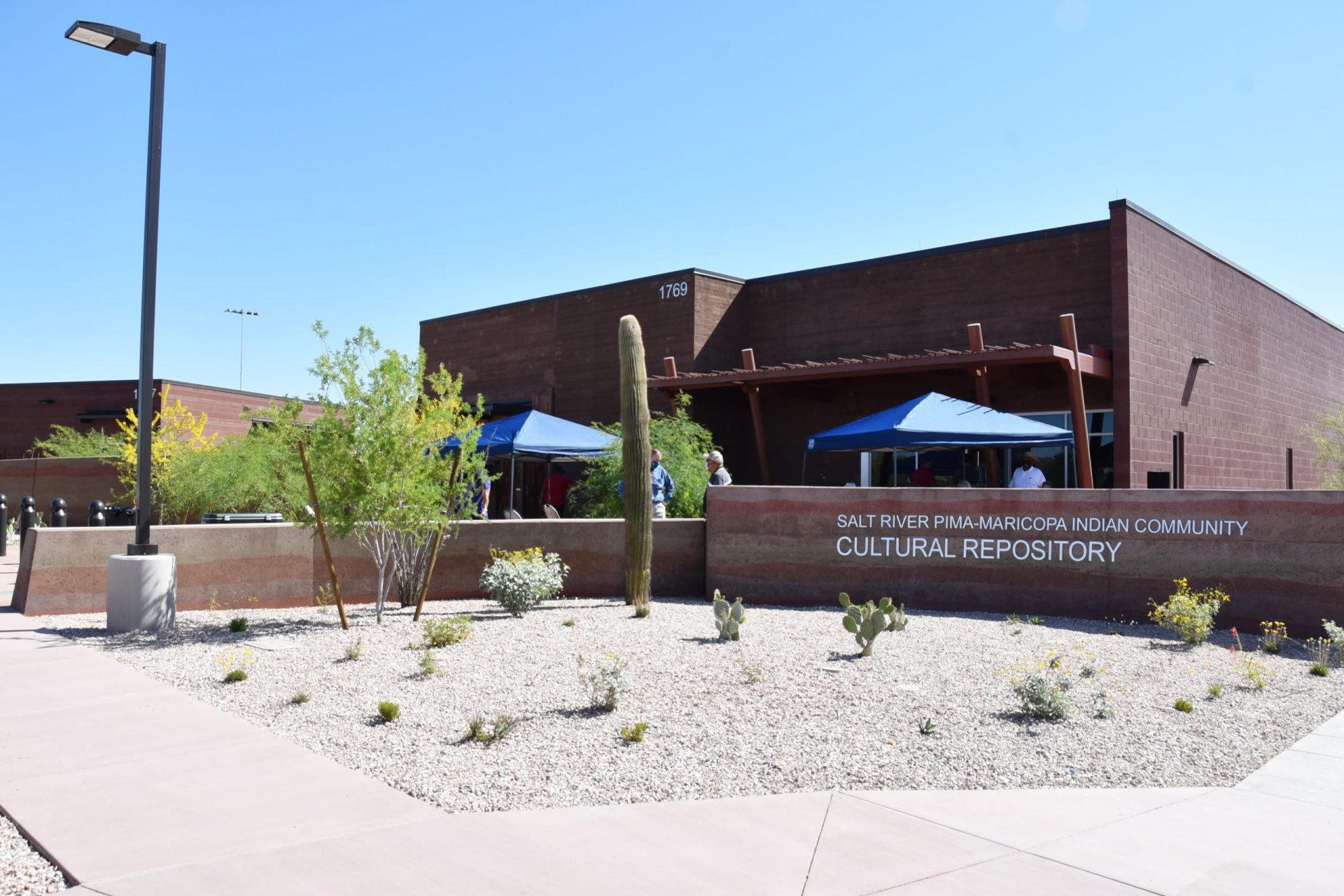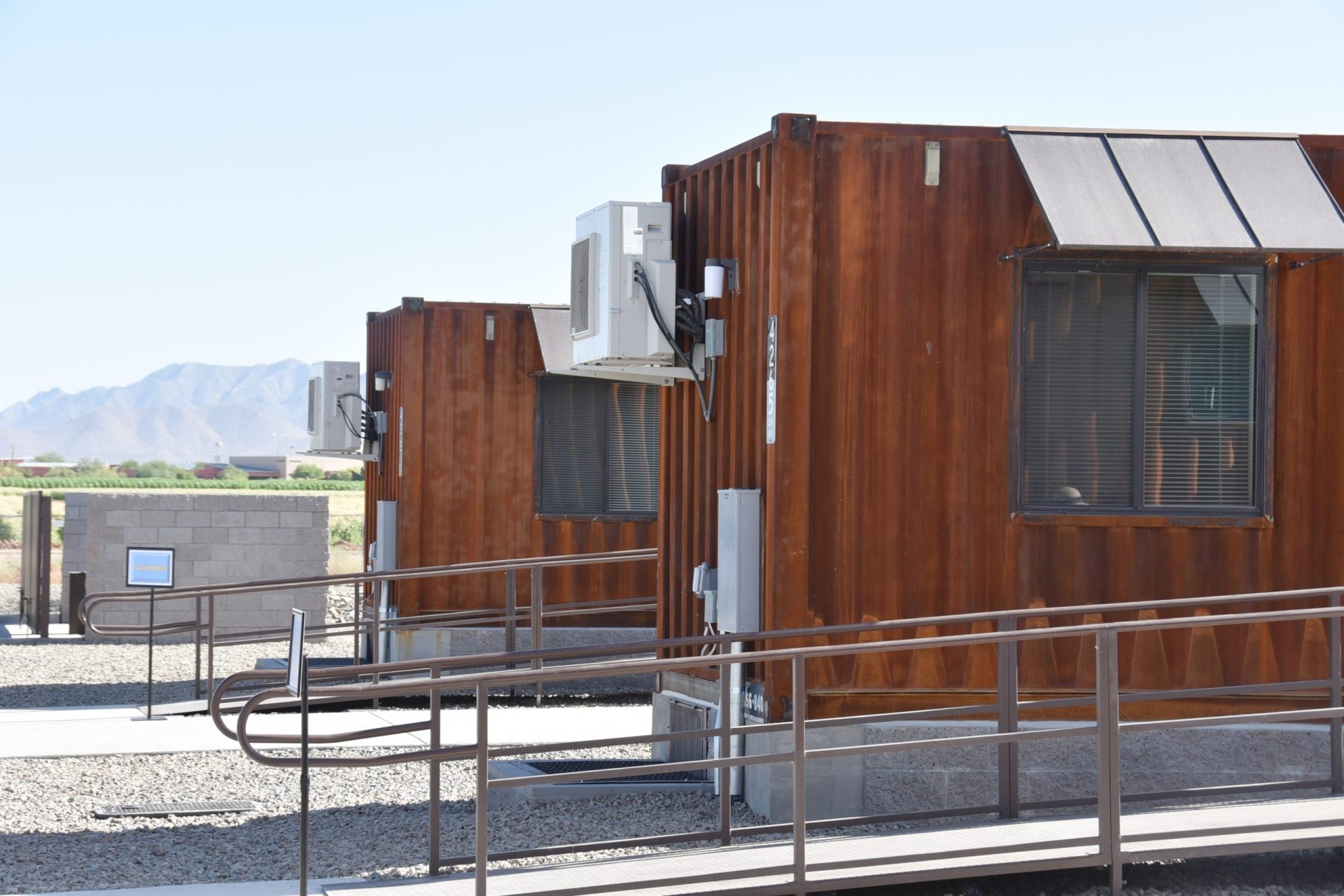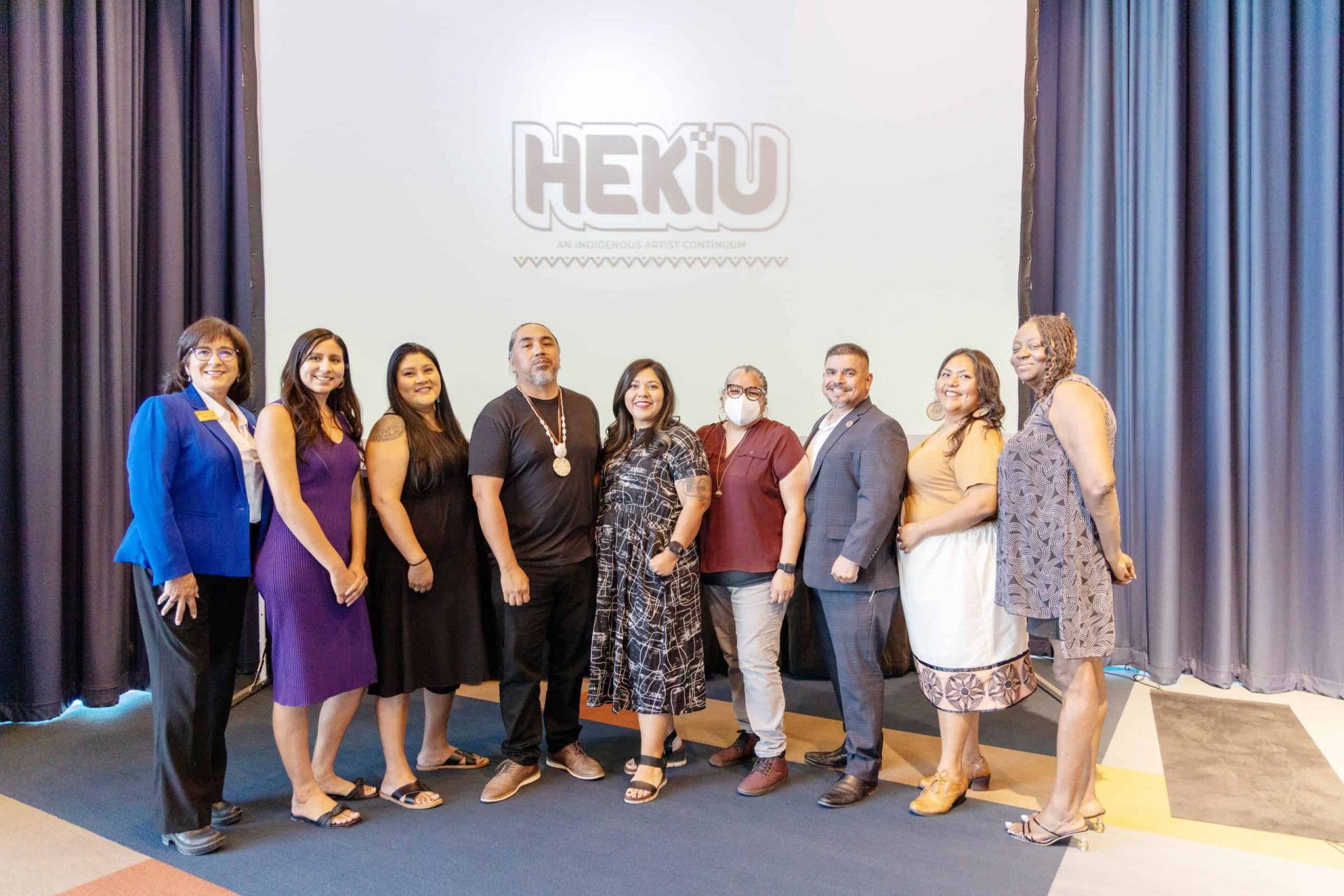VIEWS: 4476
May 3, 2021Ribbon-Cutting Ceremony for Cultural Repository Signifies New Era for SRPMIC
On April 17, the Salt River Pima-Maricopa Indian Community’s Cultural Resources Department (CRD) held a virtual grand opening for the new Cultural Repository, which is located behind the old Salt River Day School at Longmore and McDowell roads.
Due to the COVID-19 pandemic, there was no public attendance for the ribbon-cutting ceremony at 10 a.m., which was instead livestreamed on Vimeo.
Gary Owens, manager of the Huhugam Ki Museum, began the grand opening festivities by welcoming the Community to the Cultural Repository before handing the microphone over to Barbara Johnson, who gave a moving prayer for the opening.
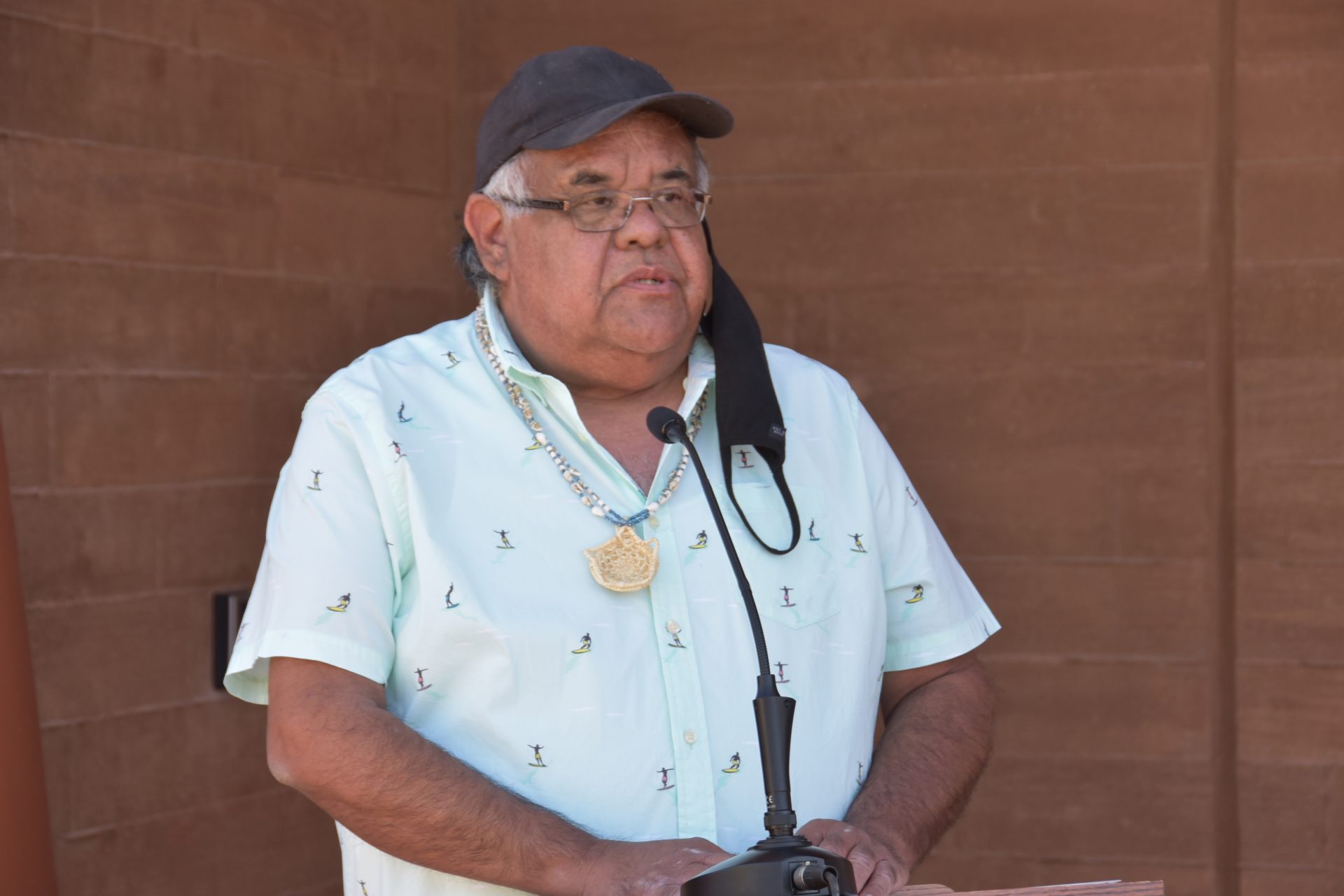
Then, Ron Carlos from the O’odham Piipaash Language Program at CRD performed a morning song from the Aylsha Song Series.
“I want to thank Ron Carlos for that beautiful song; it is a beautiful morning. I want to welcome President Martin Harvier, Vice-President Ricardo Leonard, SRPMIC Council, Assistant Community Manager Kent Andrews, staff, special guests and those of you who are watching the virtual event via livestream,” said CRD Director Kelly Washington before speaking about the importance of the new facility.
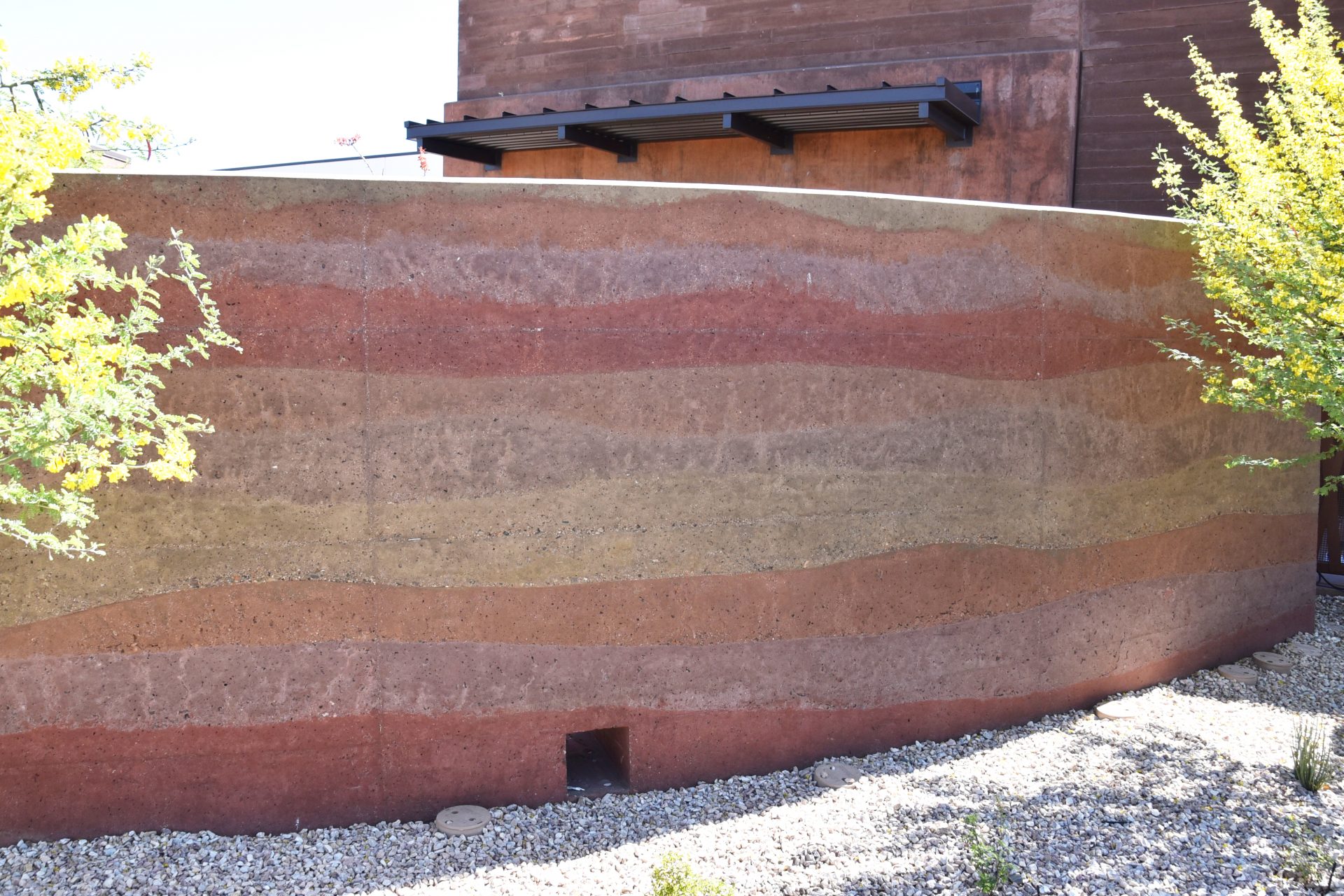
“Today we celebrate the completion of our Community’s beautiful new Cultural Repository, and this is truly an historic event to be remembered. Fortunately, this facility helps us to ensure that it will be remembered. This event is being videorecorded and photographed, there are flyers that went out, there are agendas, and these are artifacts that we leave behind from today’s event. These artifacts will be preserved in this building, and 100 years from now, our great-great-grandchildren will be able to view and hear them. They will cherish them in the same way that we cherish those things that were left behind from our great-great-grandparents for us to view and hear.”
The 24,562-square-foot Cultural Repository building will house cultural artifacts and will have archive and processing rooms, large spaces for permanent collections, a soundproofed media room and conservation laboratories for the preparation of archaeological artifacts. The outside of the building features colors and a design representing the river bank, and it follows the bends on the river as well.
Washington said that the location of the new Cultural Repository is no accident. The facility is located near the first SRPMIC school, a one-room schoolhouse that was built in 1899 and later served as a clinic and a courthouse. Across the street, to the south, is a day school built in the 1930s. Some SRPMIC members who attended the Phoenix Indian School as children helped lay the bricks in the walls at the day school as part of their vocational training. One of the old teachers’ dormitories nearby was also built in the 1930s and was later used as a childcare facility. Most recently it was used as an interim repository. To the northeast is the old rodeo grounds, and in the general area of the new repository was the first community hall, police station, jail, fire station, education department and many other facilities that no longer remain there.
“But the memories of those places,” Washington said, “and the memories of the events associated with those places still remain.”
SRPMIC President Martin Harvier addressed everyone and thanked the project managers of the construction of the facility, the facility’s designers, the SRPMIC member-owned MayDall Construction company and Vice Chairwoman of the Tohono O’odham Nation, Wavalene Saunders, for being present.
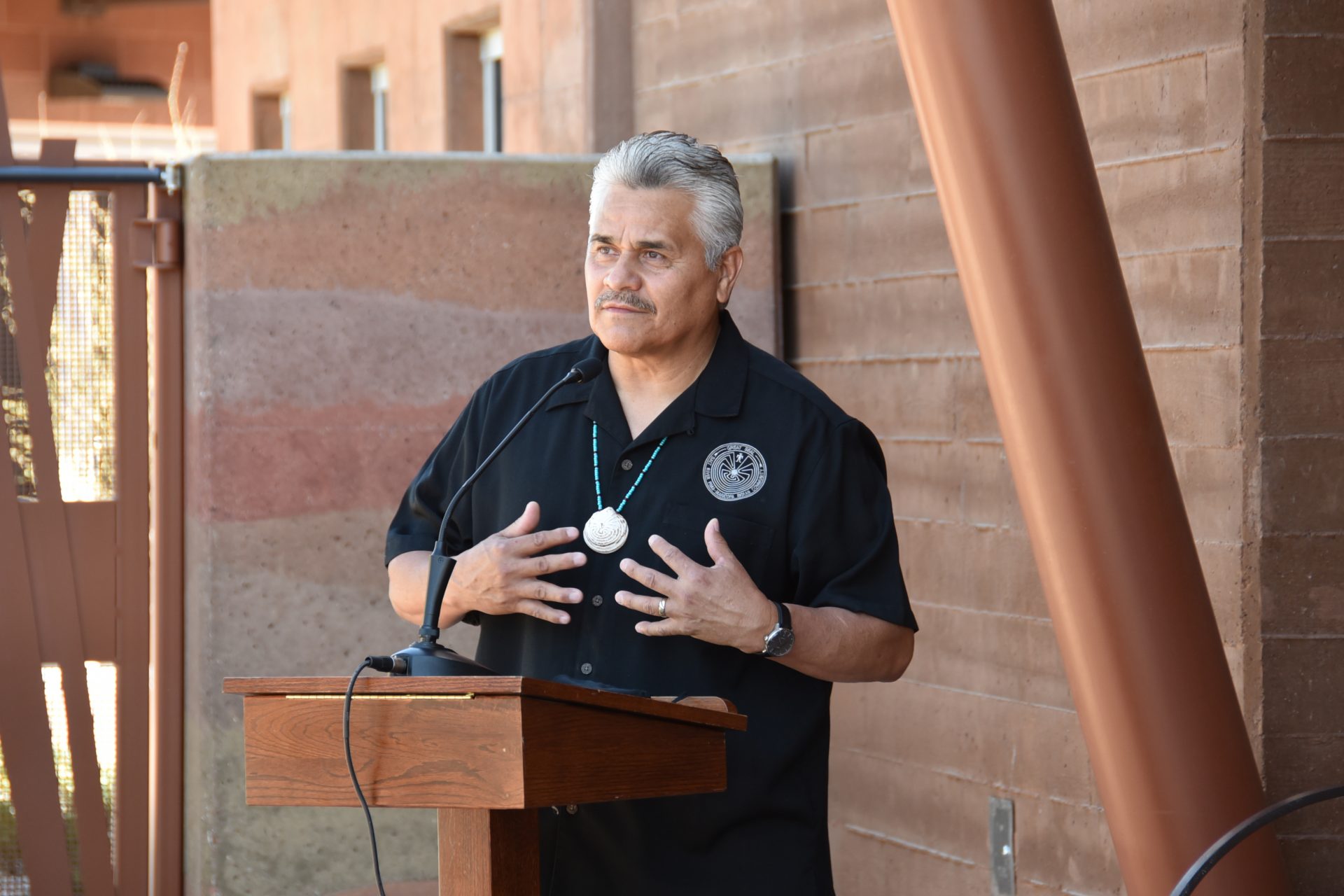
“I truly believe having this facility is not only to take care of those artifacts that are found here in the Community and off the Community when [development] projects happen, but it’s also, to me, to gather knowledge from our Community members,” said Harvier. “It’s been really tough and sad during this pandemic because we lost some elders [who held] a lot of knowledge and history about the Community. So, going forward I know there is an opportunity within the walls of this facility to capture the knowledge and history of our members and what they remember this Community being like as they were growing up.”
SRPMIC Vice-President Ricardo Leonard then came to the microphone and talked about his grandfather, who at one time was the chief of police for the Community. He also reminisced about going to school near the new repository as a young child. Leonard also performed a “God song” and was reminded of a story about a certain time that spirits leave this world, and at a certain point, arms are raised and the beams of the sun touch down on the fingers and create wings that brings you to the next world.
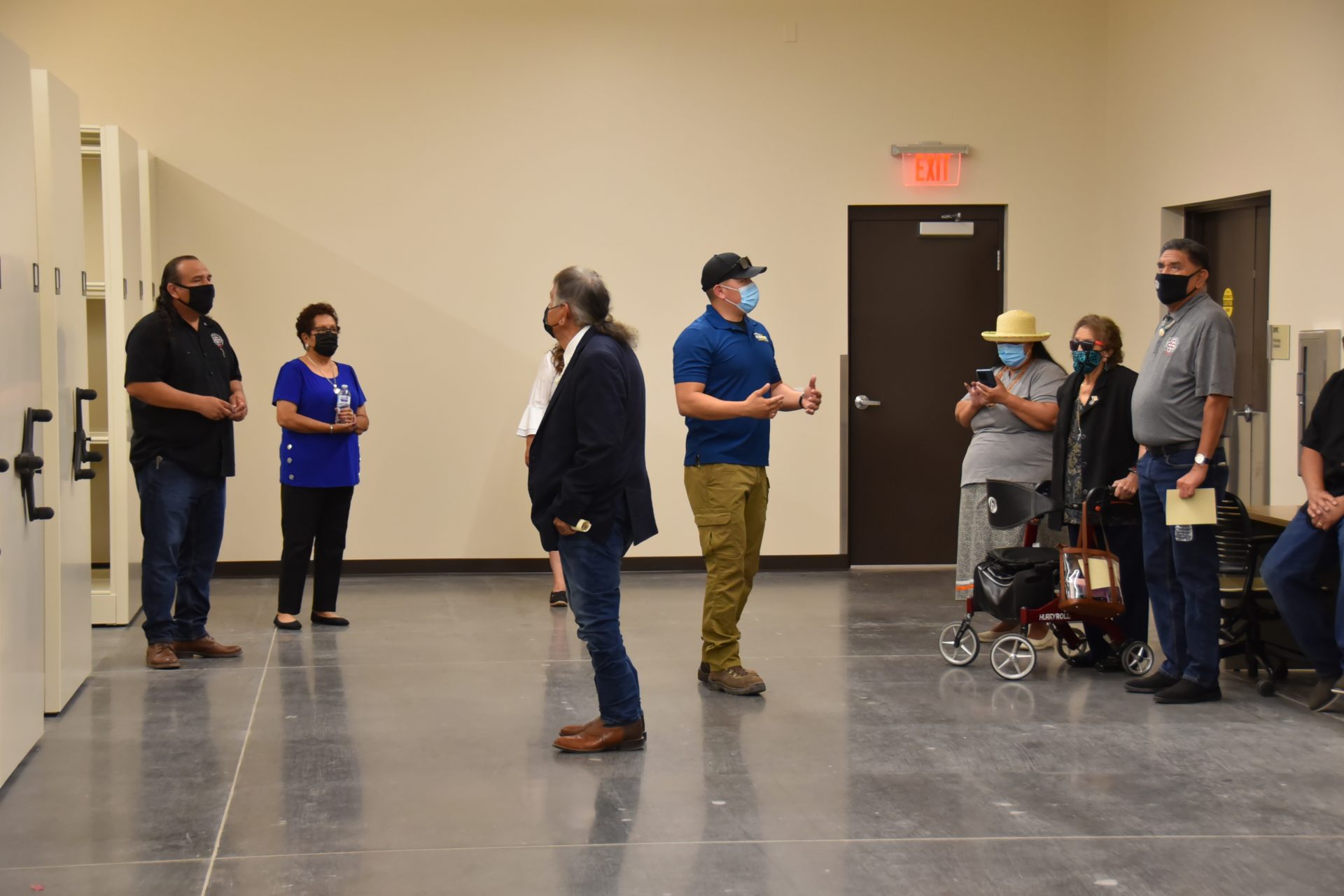
SRPMIC Tribal Historic Preservation Officer Shane Anton talked about NAGPRA, the Native American Graves Protection and Repatriation Act, which was enacted in 1990.
“It was the scientific community, as well as the Native nations, getting together and deciding that there were four groups of objects [to be discussed], … human remains, … grave offerings, items of cultural patrimony and sacred objects,” said Anton.
The 2,644-square-foot NAGPRA building adjacent to the Cultural Repository will be a place for these objects and human remains to be housed. It includes a processing room and a suite to be used for re-burial ceremonies.
Anton continued, “We take good care of our people, and once they have left this life spiritually, their physical remains are still here and we’re left to care for them and to do it properly.”
The SRPMIC THPO continues to abide by NAGPRA, as well as actively participating in NAGPRA roundtables, discussions and conferences to gain a better understanding of compliance and possible changes to the Act.
Owens announced the dedication of the new building by bringing out Courtney and Esther Moyah, who danced joyfully through the ribbon to mark the official ribbon-cutting. They entered the building to applause from all in attendance.
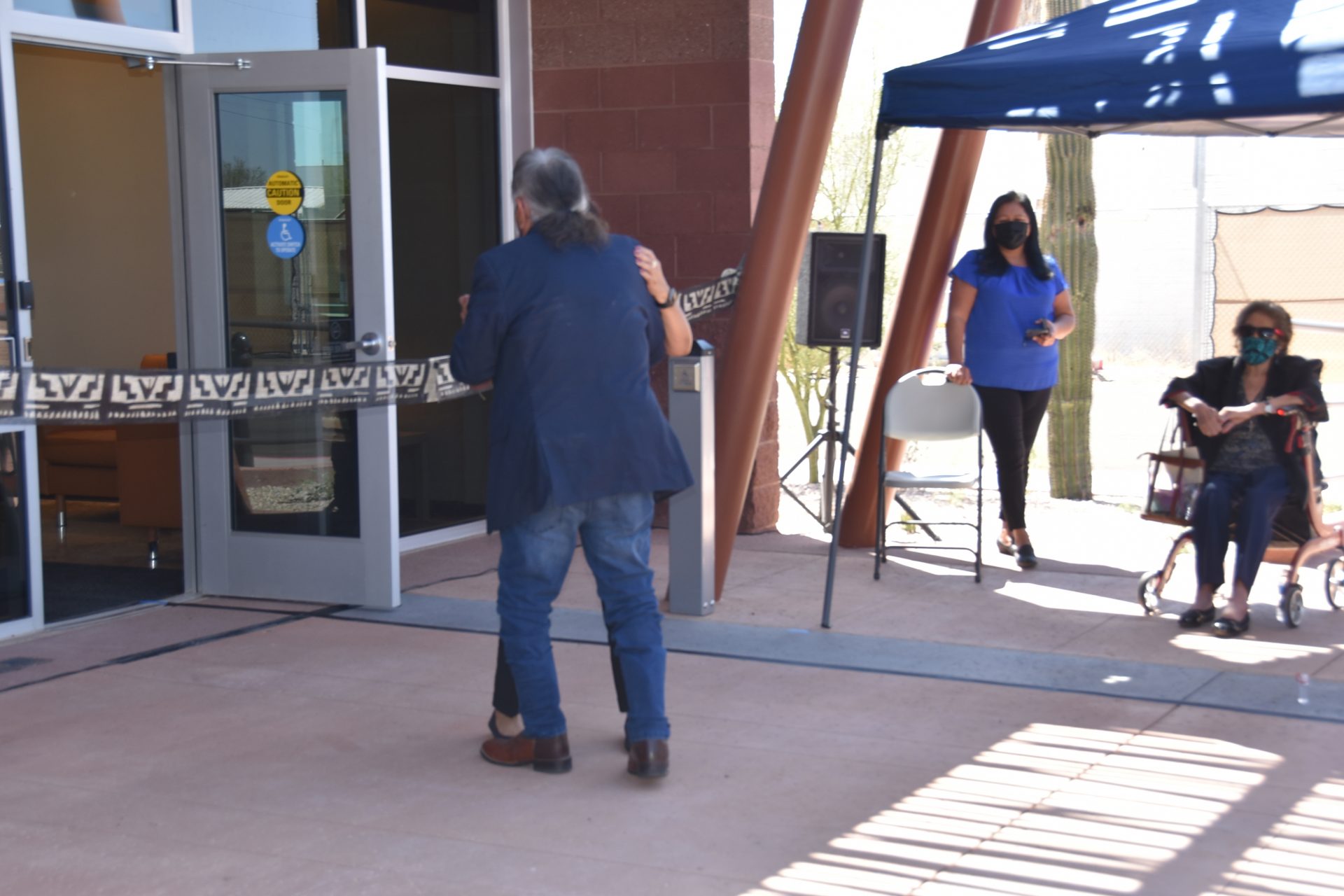
Two groups of attendees took turns taking a tour of the facilities while remaining socially distanced and wearing masks.
From 11 a.m. to 2 p.m., a public drive-around of the facility was offered to Community members, who could tune in on their radio at FM 107.7 for featured programming. About 250 gift bags were given away to all who attended the drive-around. At noon, Community members could take a virtual walking tour on Vimeo.
On March 25, O’odham Action News was given a tour led by Owens and SRPMIC Engineering and Construction Services Senior Construction Manager Jason Kerby. Owens was excited to share the facility’s progress at that time.
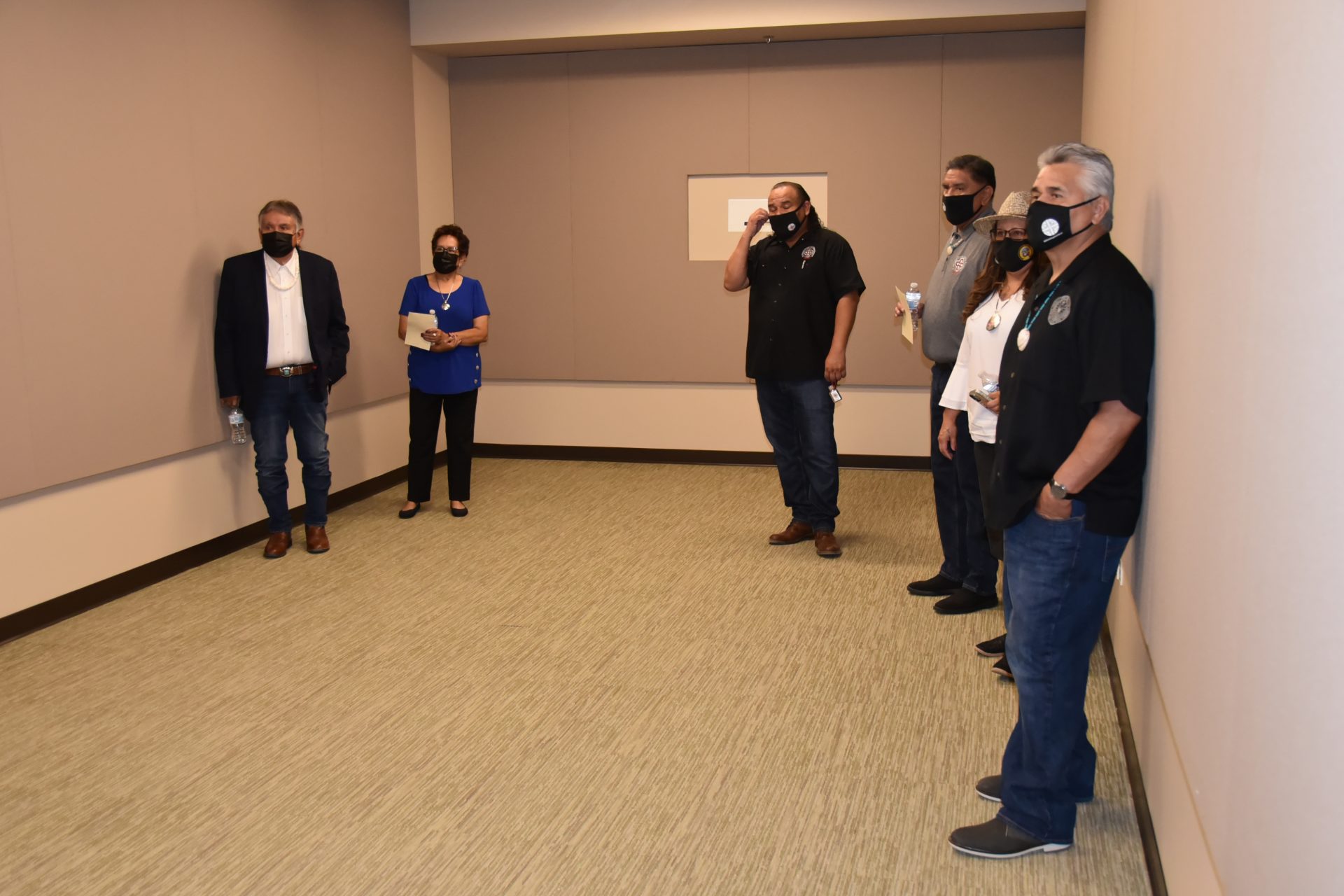
“This building was built specifically for the needs of taking care of the tribal collections, which includes the artifacts and the new [archaeological finds]. We needed a building for the Huhugam Ki Museum staff to do their job properly,” said Owens.
“We had vastly outgrown the current location, which was a BIA dormitory and was meant to be a BIA dormitory and nothing else. So, this building was built for a specific need; it was not a renovation, it was not a ‘redo.’ We have to hand it to the SRPMIC Tribal Council for believing in the whole aspect of cultural preservation to greenlight this project.”

